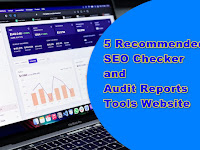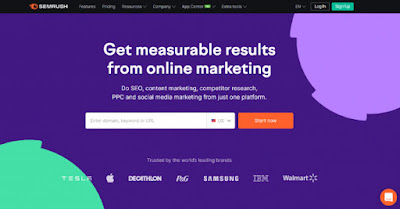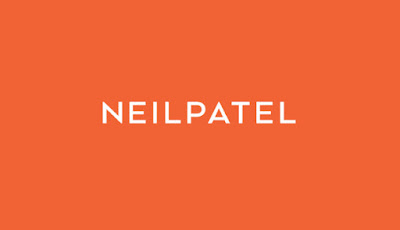DA (Domain Authority) and PA (Page Authority) are two terms that are often heard in the world of blogging. Both are often used as benchmarks in assessing the quality of a site or blog. The greater the value, the better the quality of the blog. High DA and PA values can be an indication that the blog has high credibility, reputation, authority and trust in the eyes of readers and search engines. In theory, if a blog has high DA and PA values, it will be easier for the blog to appear in search results (SERP).
It's not surprising that so many bloggers try various ways to increase the DA PA value of their blog. The similarity of the names of the two often makes new bloggers confused about the difference between DA and PA. I will try to explain it according to the knowledge and capacity that I have.
What is DA and PA?
DA and PA is a rating system developed by MOZ to measure blog quality. So it was NOT created by Google or Bing, which in fact are search engines. The score is calculated from 1 to 100. The higher the score, the more likely the blog is to appear on the first page of the SERP. To make it easier to explain DA and PA, let's say that DA is a house, while PA is every room in the house.
A house is a complete unit that is assessed based on many things, for example a clean front yard without weeds, the security level of doors and windows, decoration, whether access to each room is easy or not (partitioned or open concept house), to the cleanliness and tidiness of all the rooms in it. available. The better the house as a whole, the higher the resale value.
A house definitely has several rooms, for example a bedroom, kitchen, toilet, garage, living room, and so on. Each room has its own level of neatness, depending on the owner's personal preferences. For example, I prefer to stay in my room, so my private room tends to be more organized and diligently cleaned than the living room (because I rarely receive guests). Another example is the toilet. Having a sink is not an obligation, but if you have one, your toilet will get a plus point.
Understanding DA (Domain Authority)
DA is a reference for predicting the potential of a blog to appear on SERP. Like the house illustration above, DA is assessed from many aspects, for example trustworthy and high-quality content, domain age, and backlinks. Generally DA scores lower than PA because DA is assessed based on the overall evaluation, which takes longer to grow.
Understanding PA (Page Authority)
PA is an assessment of a specific site page, for example: Understanding Evergreen Content and Examples of Topics are pages that specifically discuss certain topics. If a page has a high PA value, it is likely to appear in the SERP.
Is DA PA Important?
Even though many bloggers are obsessed with increasing DA PA scores, it turns out that MOZ itself states that DA scores DO NOT affect blog ranking in SERP. DA data is obtained from the results of maching learning calculations made by MOZ which makes the scores fluctuate.
If you ask other people, everyone's answer will definitely be different about whether DA and PA are important or not (although I myself am sure, there will definitely be more people who answer "IMPORTANT"). So why are there still so many people checking DA PA scores? In my opinion, this is because DA PA is something that can be checked easily and many of the checking tools are free. Moreover, Google itself does not provide tools to measure site rankings. So at least we can measure and estimate at the beginning the quality of a blog.
Just imagine someone wants to rent your house. They see the overall appearance of the house and each room at a glance and quickly. To the naked eye, everything is fine, looks neat and clean. What tenants don't know is that the roof tiles in your house have holes in them and can cause leaks if it rains. Luckily, it was summer now so the renters wouldn't know about the shortage. In essence, the magnitude of the DA PA score cannot be used as an absolute assessment. There are still many other details that must be checked to determine the quality of the blog for sure. According to Garuda Backlink, a professional service that provides link building strategies, not all links are of equal value. There are certain factors that are taken into account, such as the level of relevance between linked pages, the quality of the content, and where the link is placed.
In short, it's about how link building happens naturally, not just because it looks natural! Links that provide a good user experience on a good page are worth more than hundreds of links that are just created for SEO purposes. So, the DA PA standard may be a basic reference. However, search engines have their own algorithms based on very complex factors to assess a domain or site page.
Tips for Increasing DA PA Blog Score
There are several things you can do to increase your blog's DA PA score. Actually, all the methods below are basic things that a blogger should do. What's difficult is staying consistent over a long period of time.
Get Quality Backlinks
Link sources from sites that have high authority are still an important and significant factor. Generally it can be obtained from domains with the extension .gov and .edu. But it's not always tied to those 2 extensions. Ordinary extensions such as .com or .net can also be classified as high authority if the site is trusted. Not just as long as there are lots of them, but they must really come from a trusted site. Don't be so obsessed with numbers that you carelessly spread backlinks to all sites, even to "bad" sites. Wow, that's dangerous. Later your blog could be considered spam by Google.
Content Quality
Nowadays there are lots of articles created by AI. If the content is connected and good, that's fine. The problem is if the article seems inconsequential and random just for the sake of quantity. In fact, quality must come first. Whether it's a blog with a specific niche or a mixed niche, aka a hodgepodge blog, make sure to create articles that provide solutions and answers to problems being faced by readers. Don't forget to be consistent! If you only write once a month, readers will quickly get bored and end up looking for another blog as an alternative.
Domain Age
The older a domain is, the higher its DA score tends to be. That's why many people hunt for old domains to make it easier to increase DA. If your blog is still new, don't be discouraged. Remember, the determining factor is not only domain age. Anyway, just create quality content!
On-Page SEO
On page SEO is page optimization carried out from within the blog itself, for example:
- Domain name selection. Try to choose a domain that has the main keywords in it.
- Permalink URL. Also insert keywords into the article slug or permalink.
- Provide relevant internal links. Internal links are links to other articles that are still on the same blog that have similar topics. Make sure there are no internal links that lead to empty pages so that there are no broken links.
- Also provide external links if necessary. External links are links that lead to other blogs. Don't worry that readers will "jump" out. In fact, this provides evidence that you always read from various sources in the process of creating articles. Remember, always provide external links to quality sites.
- Do research to find keywords with high search volume. Also get derivative keywords to spread into the article.
- Spread derivative keywords into each paragraph naturally, but not too many so they don't come across as spam and irritate readers.
- Give a title and alt to each inserted image.
Traffic
The large amount of incoming traffic is also an important factor. But not as long as there are many. Readers who come directly by typing in the blog address and who come via SERP search results are considered quality natural traffic. This is different from readers who are brought in through paid methods such as Facebook Ads, Instagram Ads, or Google Ads. That doesn't mean you can't advertise. Please just try to invite new readers. If the blog is good, they will definitely come back without having to go through advertising.
Blog Page Speed
Readers tend to prefer blogs with a minimalist appearance and not a lot of distracting knick-knacks because their main goal in coming to your blog is to READ. The more details you install, the harder the page will load. Choose a template that is simple but still looks elegant.
Conclusion
REMEMBER, DA and PA were not created by Google. A high DA PA score does not mean your blog has good SEO. It's not uncommon for me to find services for quickly increasing DA PA scores in Facebook groups. This means that DA PA can still be tricked. Vice versa, a low DA PA score does not mean your blog will be less competitive in SERP. DA PA is only an initial benchmark for assessing a blog before it is analyzed more deeply.
If you open guest post type monetization, there is no harm in increasing DA PA naturally because there are still many local advertisers who provide a minimum DA requirement of 15 and above. Always put readers first before others. DA PA will slowly increase if the blog already has loyal readers.

















